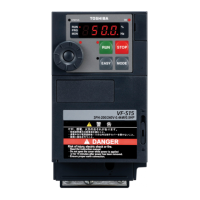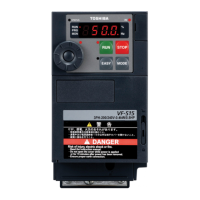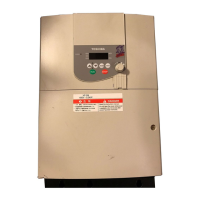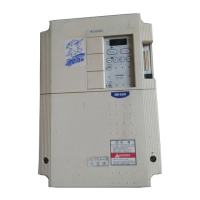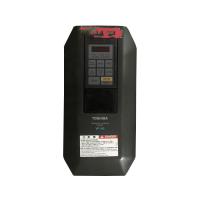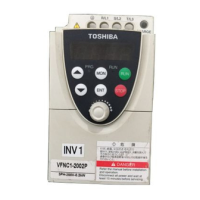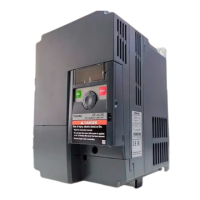E6581158
F-54
6
H: Using this parameter along with H adjust characteristics in areas in which the frequency is
above the base frequency (areas where the field is weak).
* How to make adjustments where the frequency is above the base frequency (where the field is
weak).
If a heavy load is applied instantaneously (or transiently), the motor may stall before the load
current reaches the current set with the stall prevention level 1 parameter H. In many
cases, this kind of stall can be avoided by gradually reducing the setting of H.
A drop in supply voltage may cause fluctuations of the load current or vibration of the motor. In
some cases, such phenomena can be eliminated by changing the setting of H to between
80 and 90. However, this may cause an increase in load current, so that it is also necessary to
adjust the setting of the electronic thermal protective level 1 parameter (VJT) properly ac-
cording to the motor capacity.
H: No need to adjust (Do not change the setting, unless otherwise instructed by Toshiba technical
staffҗ)
VJT : If the rated capacity of the motor is one size smaller than that of the inverter, lower the thermal
protective level according to the rated current of the motor.
* Sensorless vector control may not operate properly if the motor capacity differs from the
applicable rated capacity of the inverter by more than two grades.
6.18 Acceleration/deceleration patterns 2 and 3
6.18.1 Selecting an acceleration/deceleration pattern
H : Acceleration/deceleration 1 pattern
H
: S-pattern lower-limit adjustment amount
H
: S-pattern upper-limit adjustment amount
• Function
These parameters allow you to select an acceleration/deceleration pattern that suits the intended use.
Title Function Adjustment range Default setting
H
Acceleration/ deceleration 1 pattern 0: Linear, 1: S-pattern 1, 2: S-pattern 2 0
H
S-pattern lower-limit adjustment
amount
0-50% 10%
H
S-pattern upper-limit adjustment
amount
0-50% 10%
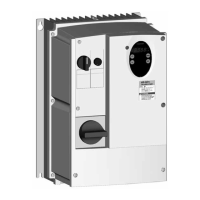
